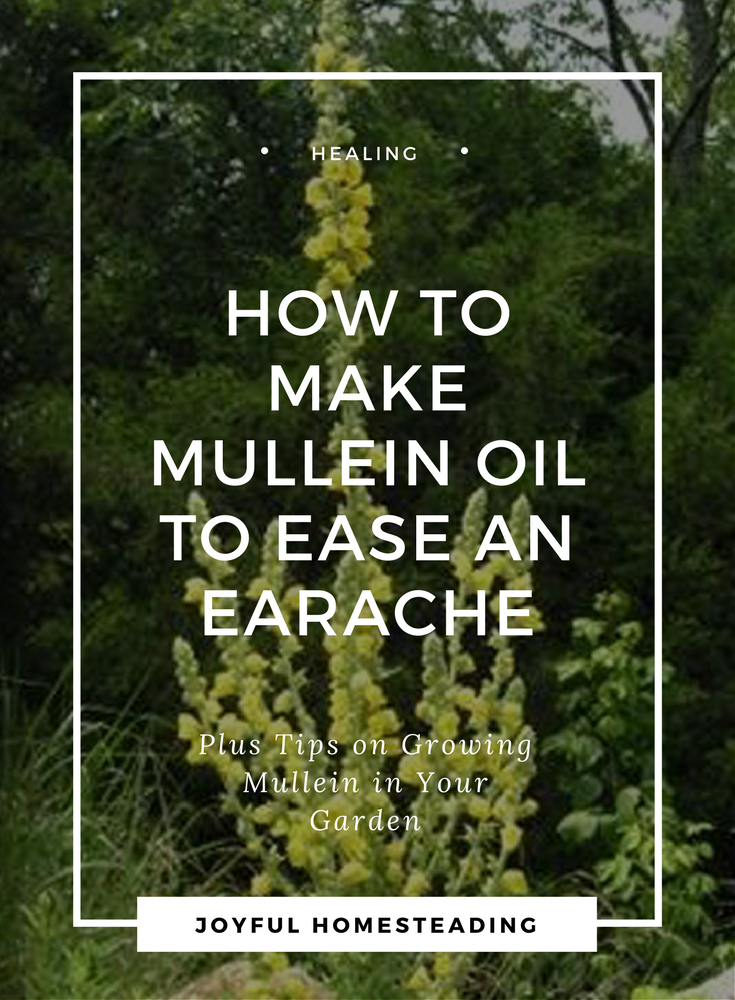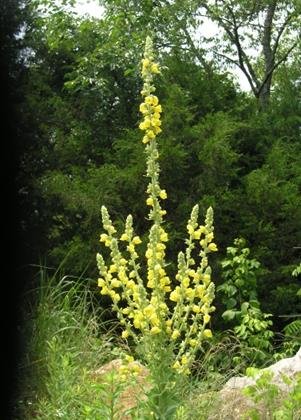Mullein
Mullein is an underrated, but powerful little plant that you would often mistake as a useless weed, but don’t. You'd be surprised at the benefits of this powerful little roadside flower, including as a remedy for coughs, a great combatant for many strains of influenza and a terrific, low-cost way to heal an earache. This unassuming plant is a must-have in the self-reliant garden.

What is Mullein?
This herb is a member of the snapdragon family and has been known in the past as "Candlewick Plant", "Hag's Taper" and "Torches" because it can burn so easily once it is completely dried.
Apparently, a single spark can set this herb on fire, and before cotton was discovered, people used the herb as a wick in lamps.
Although its days as a fire starter are over, the herb is still useful as a soothing tea and for lung ailments.
As early as the seventeenth century, farmers would give the herb to their cattle to help heal lung diseases, and at one time, poachers would throw the seeds of this herb into the water to intoxicate the fish and make it easier to catch them.
Although mullein can be found in the wild, including along roadsides and in pastures, it's best to grow the herb yourself or purchase organically grown mullein to avoid harmful pesticides. Mullein contains healthful nutrients, including sulfur, magnesium, iron, phosphate and potassium.
Both the leaves and flowers of this herb can be used.
For the Homesteading
Medicine Cabinet
A year or so ago, a cough was going around in my family that no one could get rid of. Finally, a family friend recommended we drink Mullein tea sweetened with honey. I was amazed at how quickly all of our coughs went away, and this wonderful herb has been a family favorite ever since.
The herb works by soothing an irritated throat and therefore easing coughing. It has a soothing and softening effect on the skin as well. It works as an astringent, stopping the flow of blood or other secretions.
Do you have trouble sleeping? The next time you have insomnia, make a cup of tea with this herb. An infusion of the herb also works as a mild sedative to help you sleep.
It can also ease the symptoms of influenza and promote healing. Make an infusion by placing a handful of the herb in a cup and covering it with boiling water. Allow it to steep for ten minutes and sweeten with honey.
Relieve hemorrhoids by applying a poultice of this amazing herb to the affected area.
Looking for a low-cost and self-reliant antiseptic? Steep the flowers in olive oil for 21 days, and then apply it to cuts and scratches to kill germs.
For Earaches
You can make an essential oil out of the flowers to ease the pain of an earache. The following recipe comes from the Natural News Website.
What you need:
- 1/4 cup of either dried or fresh mullein flowers
- olive oil
Put the flowers in a small glass jar that has a lid and cover them with olive oil. Set the jar in a warm spot for several days. If you are using fresh flowers rather than dried, cover the jar with a cheesecloth to let the moisture escape. At the end of a week or two, strain the oil through a cheesecloth and store the oil in a dated and labeled dropper bottle in the refrigerator. Gently warm before using.
Growing Tips
Start this herb indoors in a window greenhouse. It's important to start them inside, because birds, especially finches, love the seeds and will likely eat them before they have a chance to sprout. Press the seeds gently into a growing medium and give them two weeks to germinate.
Transplant the seedlings into a larger pot and then put them in your garden in the early summer.
Your plants will produce flowers the following year.








New! Comments
Have your say about what you just read! Leave me a comment in the box below.